Captain Raymond Lawrence has crash landed on Aster IV after his merchant vessel was attacked by the Federation. His escape pod is discovered by Princess Laeticia and her knight Albaird of the Aucerius Kingdom. It’ll be a while until rescue comes so Ray and Laeticia decide to cooperate and aid each other; looking for Ray’s missing crew while they seek out one of the king’s old aids on this underdeveloped planet. Along the way, they discover the cargo Ray’s ship was transporting: a mysterious device called D.U.M.A.. Thus the group sets forth on a galaxy spanning adventure that will determine the fate of the universe.
Star Ocean: The Divine Force is the grand return of the Star Ocean series. The series began in 1996 (remastered in 2019) with the previous entry in 2016 receiving… let’s say underwhelming reception. This new release shoots for the stars, so does it end up among them or does it crash back down to Earth?
The Divine Force has you choose between one of two protagonists for your adventure, either Ray or Laeticia.The story changes slightly depending on who you choose, with Raymond’s side emphasizing the Sci-Fi elements while Laeticia’s is more Fantasy focused, but the overall plot remains the same. After trying out the demo, I went with Laeticia since I liked her playstyle more (also I wanted to be a cute swordswoman princess), and regardless of your choice, you can swap to anyone in your active party of four at any time. The party will disband or split up at certain points, however, and you’ll have to play the other protagonist to see their side.
Story is a big focus of almost any RPG, so while I don’t want to spoil anything, I do need to note that the plot takes a loooooong time to get going. You spend the first 10 hours or so of the game retreading the same few areas over and over while most of the mechanics are introduced and you get to grips with the combat. A lot of this feels like filler sadly, with a few bits of foreshadowing or worldbuilding scattered sparsely throughout. I hate to be that person who says the game gets good after 10 hours, but it is true in this case. Once you finally reach the capital, the story begins in earnest and remains constantly engaging until the end about 20 hours later.

Before you reach that point, combat is mostly what carries your experience, and for good reason. As you explore Aster IV, you’ll come across various monsters and engage them in real time combat, which is as simple as just approaching them or getting an advantage by striking before they see you. You play as one character in your party while the AI controls the rest, with what you can do in battle determined by the Chain Combos you set up in the main menu. You have three attack buttons (controls can mostly be reassigned) with each button corresponding to a sequence of three moves. Each move uses up a certain amount of EP, which is shown near the bottom of the screen. You start with a maximum of 5 EP, and if you run out you’ll need to wait a moment without attacking, dodging, sprinting, or jumping for it to replenish.
After unlocking them in the Skill Tree, you can assign moves here to be executed as you continue to press the button. In simpler terms, you make your own combos! For example, my bread and butter combo as Laeticia involved an advancing slash, stunning the enemy with a wider attack with both swords, then ending with a big spin that would launch foes into the air and knock them back. If I held the same attack button down for a second, I could perform a cross slash in the air that would damage any who touched it for a short time. You can swap between chains at any time, too. For example, by executing your first two square button attacks and then canceling into your triangle chain you make your combo much longer.
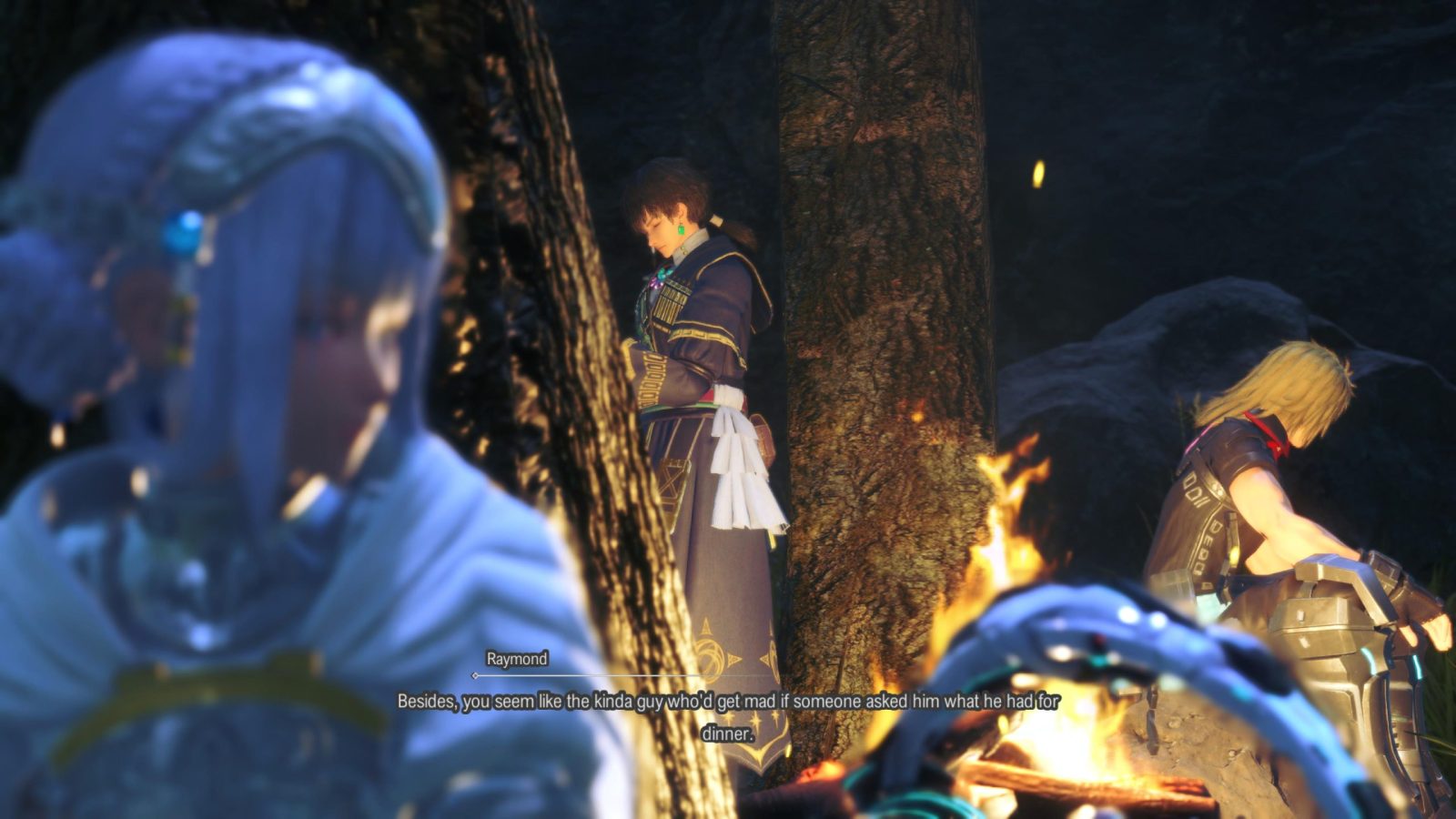
It’s not just attacks you can put into chain combos either; you can also add passive buffs, spells, and even items to your chains. I would highly recommend putting some healing items, especially resurrections, on at least one of your hold buttons because the AI tends to die constantly. Your party is mostly there for moral support in all honesty, because AI control is pretty stupid and any characters you don’t control are inherently less useful thanks to D.U.M.A., your (un)friendly robot companion.
D.U.M.A. follows whomever you’re currently controlling and they can perform certain, crucial actions. While on the field, you can fly for a short distance and even glide once the dash ends to reach new areas. Pressing the same button in combat will execute their Vanguard Assault, or VA, which dashes straight towards the targeted enemy with a character specific attack. As you fight, you increase the VA gauge at the bottom of the screen, which is spent by performing a VA and dashing in another direction just before you hit.
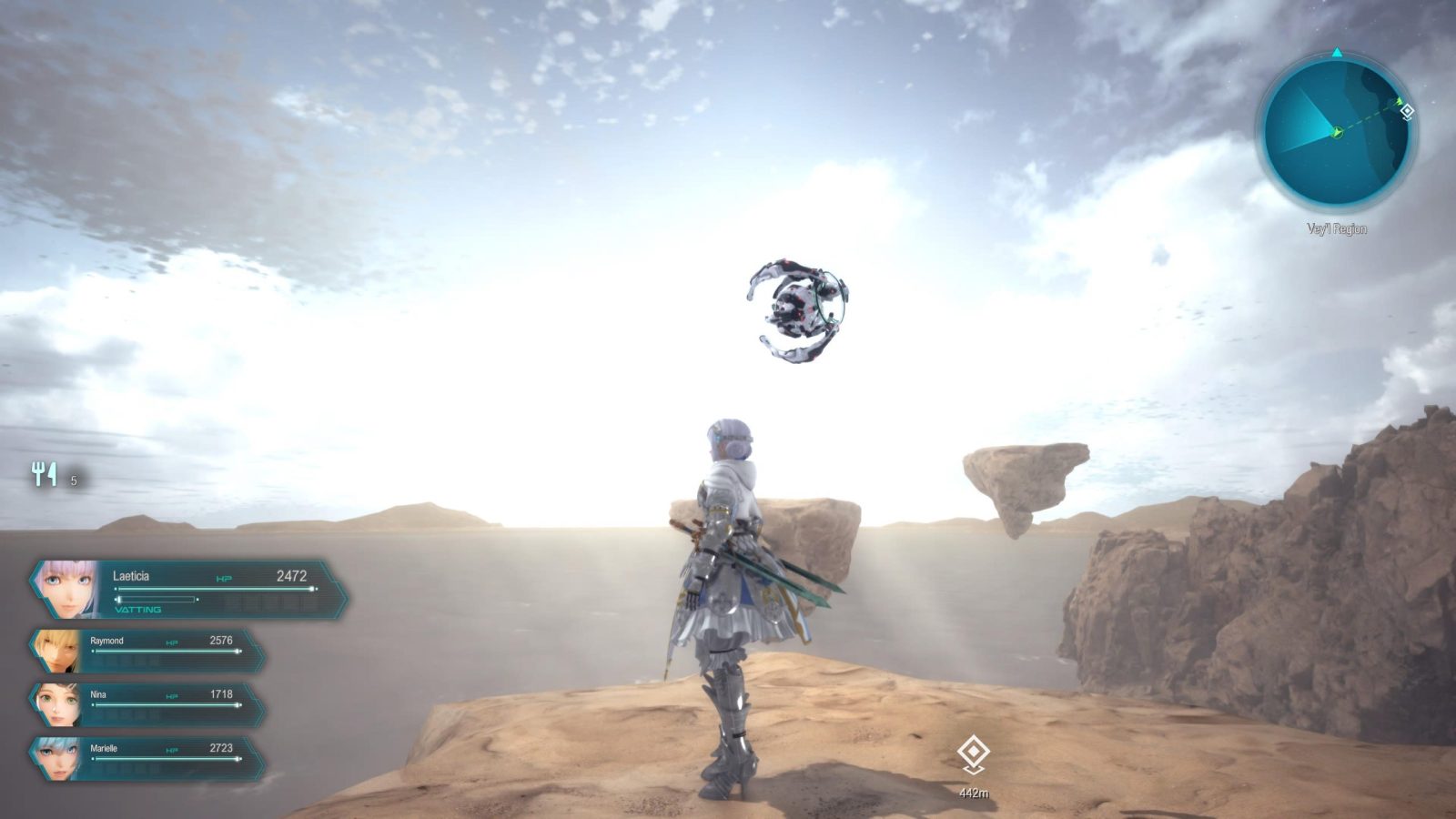
If you begin the assault in an enemy’s field of vision and then move out before you hit them, you perform a Blindside, stunning them for an amount of time that depends on the VA gauge. However, you can only Blindside enemies that have eyes and small enough vision cones, which can become frustrating since most bosses are immune. On top of looking very cool, performing a VA Blindside will increase your maximum EP and, if the enemy is stunned, so will any further attacks. Doing this, you can triple your character’s max EP up to 15 and unleash devastating, unending combos. However, getting staggered yourself will decrease your maximum EP, so fight wisely.
Later on in the story, you’ll also gain access to two more of D.U.M.A.’s functions: Estery Cage and Vatting. Estery Cage will reduce all damage the party takes while active, at the cost of not being able to use VA or having attacks increase the VA gauge. Vatting is essentially a super move, reliant on a meter that works similarly to the VA gauge. Once full, you can press R2 to unleash that character’s special move. For Laeticia, this is a big spinning slash that deals damage to anyone nearby, Ray executes one big attack on a single enemy, Elena will buff herself up for a time, and so on. Each move is worth at least seeing once for the flashing animation, but I found myself relying mostly on Laeticia, Ray, and Marielle for their big damage attacks. I also used Nina’s healing move occasionally to help the AI out of a dire situation they put themselves in.
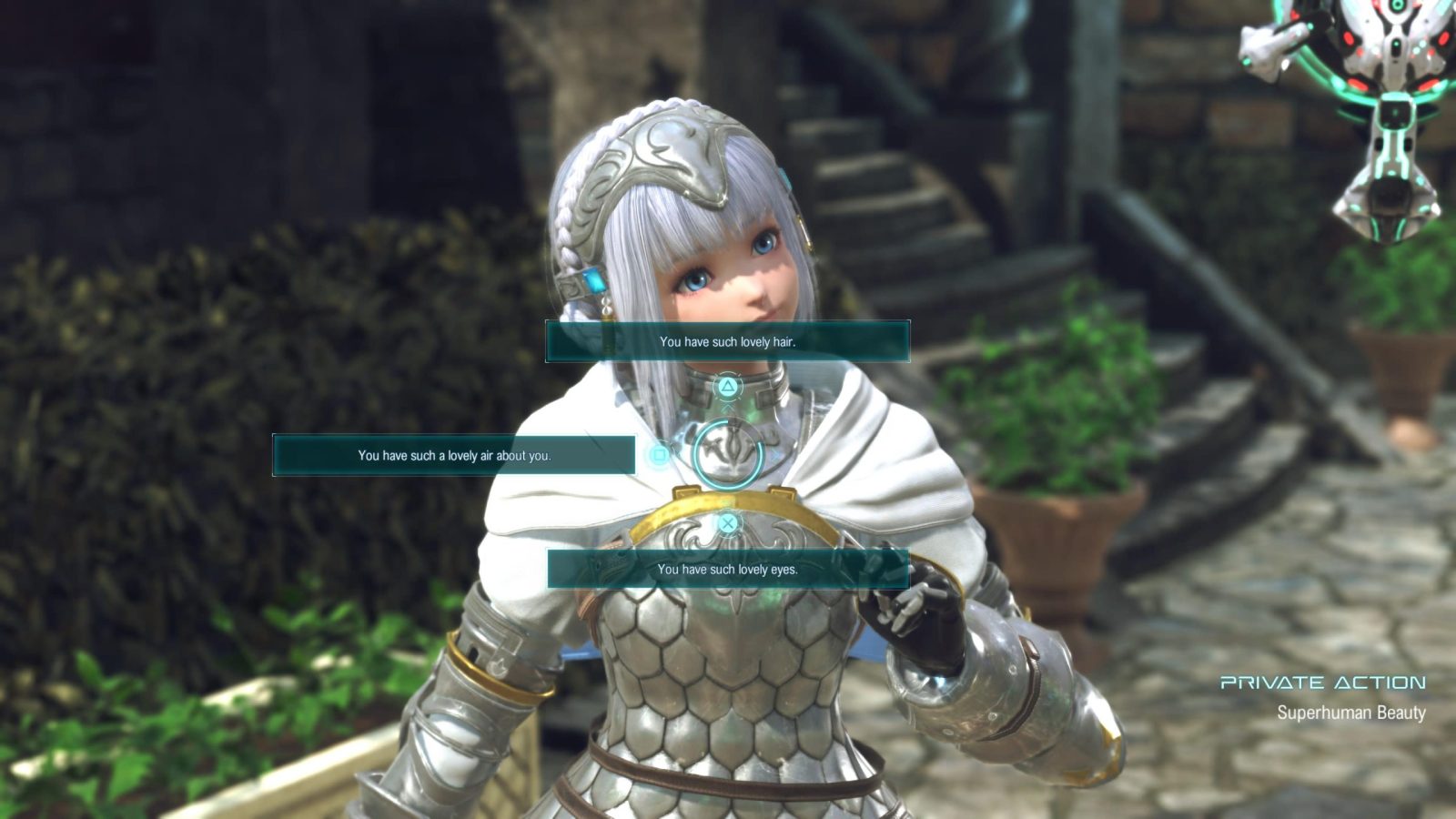
Speaking of, Nina is the most unique party member. She can’t target enemies and instead focuses on allies since she’s your sole healer. Everyone else is DPS-focused with maybe one or two other healing moves in the entire game, so I kept her in my party almost the entire game. This is one of the frustrations with combat; the lack of party diversity. You can basically chalk everyone up to either physical or magical attackers, so party composition feels like it doesn’t particularly matter. I still rotated everyone in and out occasionally, but I did feel somewhat forced to keep Nina on my team with no other healers and Estery Cage supposedly serving as your “tank” option. However, this does keep combat fast and frenetic the entire game, even if you and the party take way too much damage at all times.
I played most of the game on the hardest difficulty, Universe, but I had to move down a level or two for just about every boss. I keep saying the AI is bad because it’s REALLY bad; they may survive most normal encounters, but they die constantly in boss fights. Often you’ll revive an ally only to have them charge in and be killed instantaneously before you can even register that they came back to life.
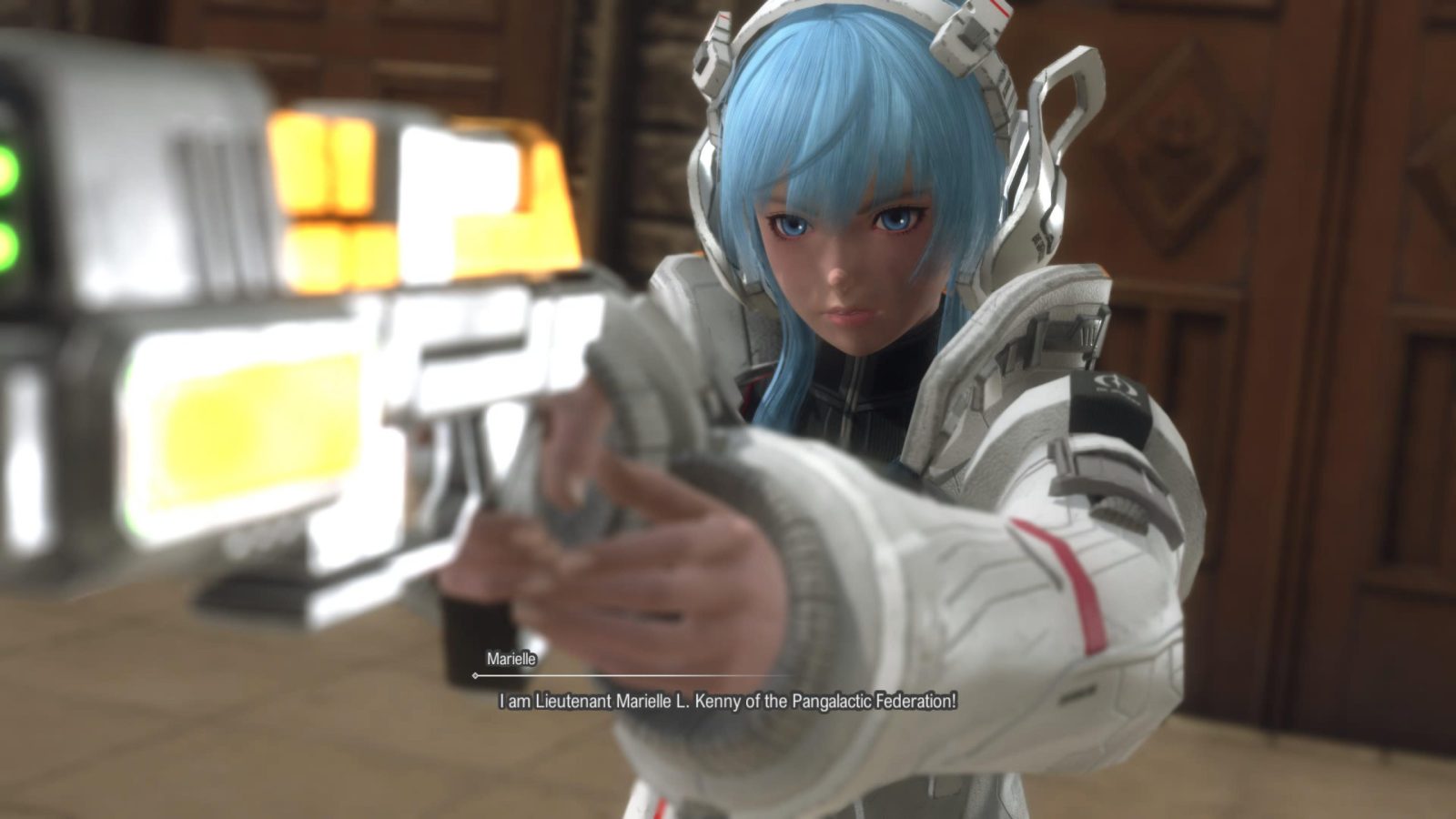
While assigning resurrections to a button hold is useful, you’ll still want to make use of Pause Mode to use other items. Pressing in the Touch Pad will pause the action, allowing you to think things through, switch characters, and use items not assigned in your Chain Combos. This does make item use take longer, but you’ll need it fairly frequently. Additionally, you can just open the normal menu at any time in combat to swap out party members and even equipment, but doing so will incur a penalty where you’ll be unable to open the menu again for about 30 seconds.
Overall, while the combat is incredibly fun, it does have a few nagging frustrations that pop up occasionally and could be solved through either enemy rebalancing or a more role diverse party.
The targeting system in the game is very wonky, often locking onto enemies the entire battlefield away from me instead of the one I was actually trying to hit right next to me. When someone leaves your party (which happens frequently) you need to annoyingly reequip all of their accessories.
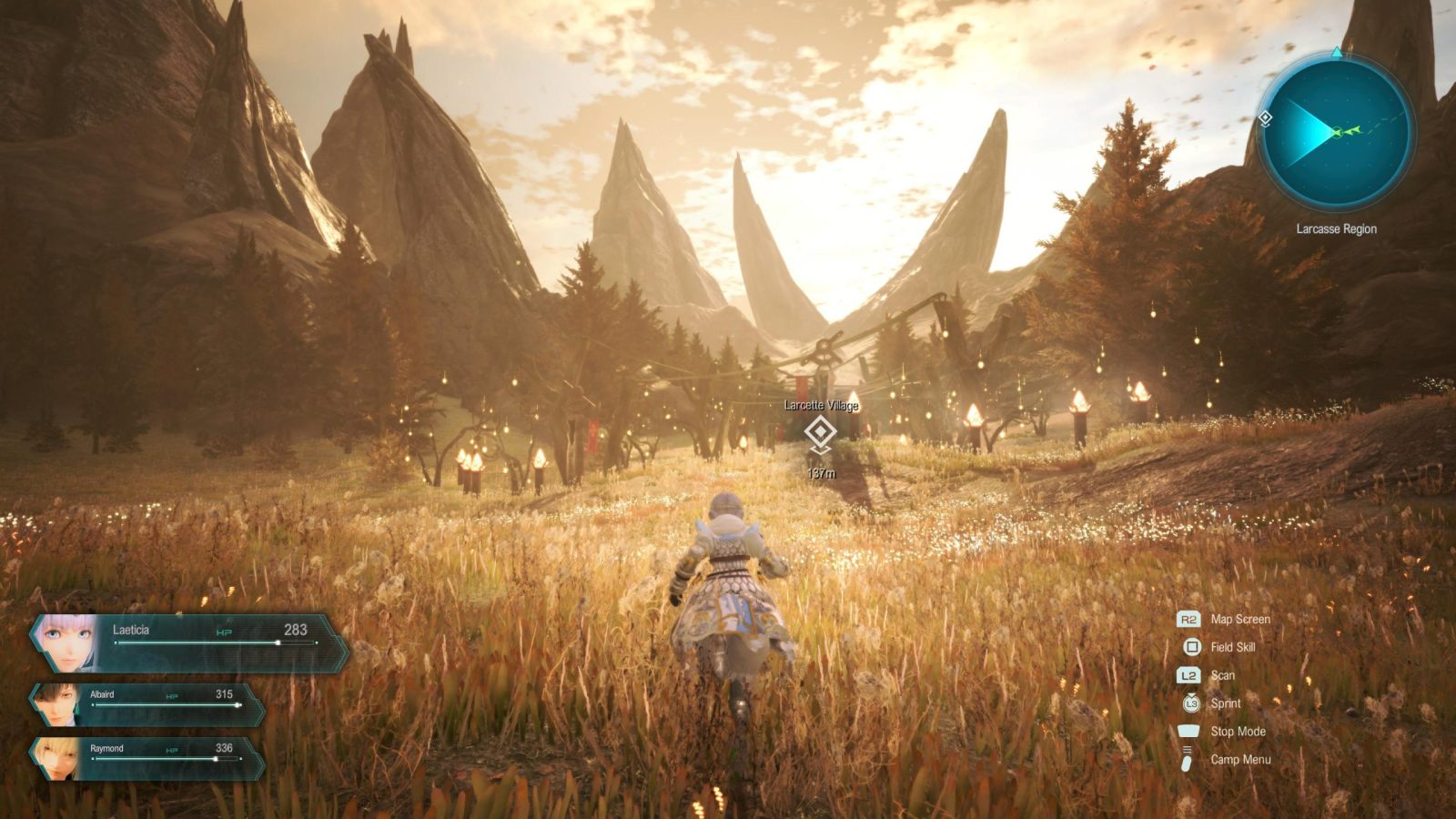
Aster IV and beyond are filled with gorgeous locations to explore. The game is semi-open world, with multiple large zones connected by loading screens. You’ll also come across the occasional, more linear dungeon which may introduce dungeon specific mechanics like having to collapse floors to move on or finding keycards to unlock doors. I really like the world design here, both aesthetically and mechanically. There are a ton of distinct areas, from verdant grasslands to derelict spaceships;they are all gorgeous and keep you interested in what’s next. Each dungeon having its own mechanic also keeps things interesting. Dungeons are short enough so as not to overstay their welcome but have plenty of optional areas hiding nice goodies like items and equipment.
Star Ocean: The Divine Force is incredibly pretty, especially on PS5 with a 60 fps mode – a must for any action game. The game mostly sticks to that target, with only areas later on in the game dipping similarly to the demo. I am confident this could be ironed out in a patch, but it doesn’t impact gameplay all too much either, thankfully.
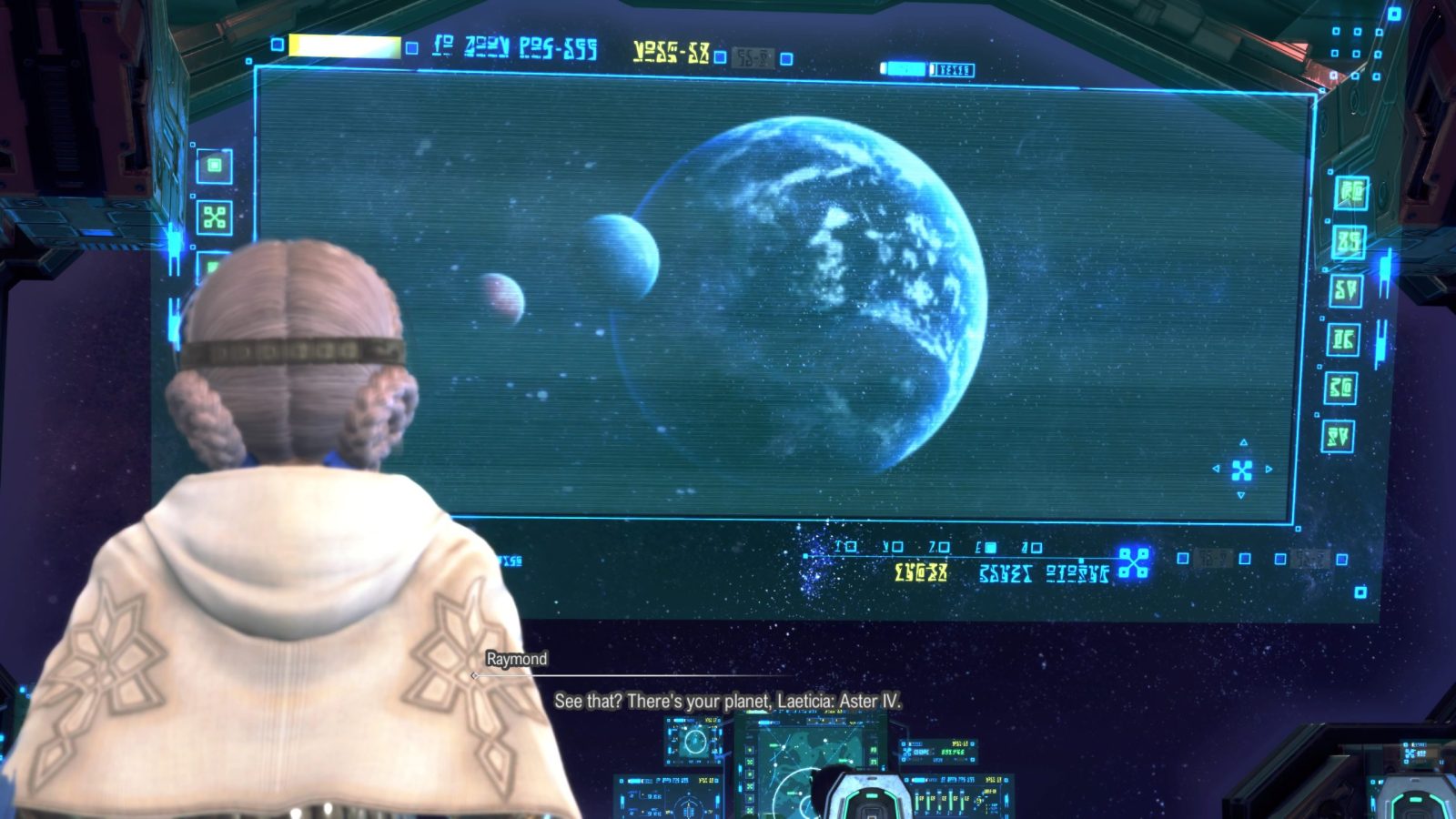
The only complaint I have about the game’s visuals is actually with the character designs, particularly the sexual dimorphism. Star Ocean takes a bit of inspiration from anime, so some characters (mostly women) have large eyes and babyfaces. This looks weird right next to the more realistically proportioned characters, and while you do get used to it, the contrast will still pop out sometimes. However, instead of removing the more anime look entirely, I would prefer the game to lean into it with a cell shaded art style or even just a few more diverse face types. Setting aside that the cast is mostly white/asian (it’s an anime thing), characters can look kinda similar if you strip away their hair. What I’m saying is the game could use more designs between the super masculan Midas and ultra fem Chloe. The designs themselves are great, I especially love Laetica’s knightly armor contrasting with the Sci-Fi surroundings, but hopefully in the future we’ll see more variety, like the soundtrack has.
Since Star Ocean is a mix of Science fiction and Fantasy, the music follows suit with some excellent tracks. You’ve got tunes of all types here, with the standout song being the battle theme. It’s one of those soundtracks that fits the game perfectly, but I probably wouldn’t seek it out outside of the game. It does its job of being nice to listen to while you’re playing, which is all you can really ask.
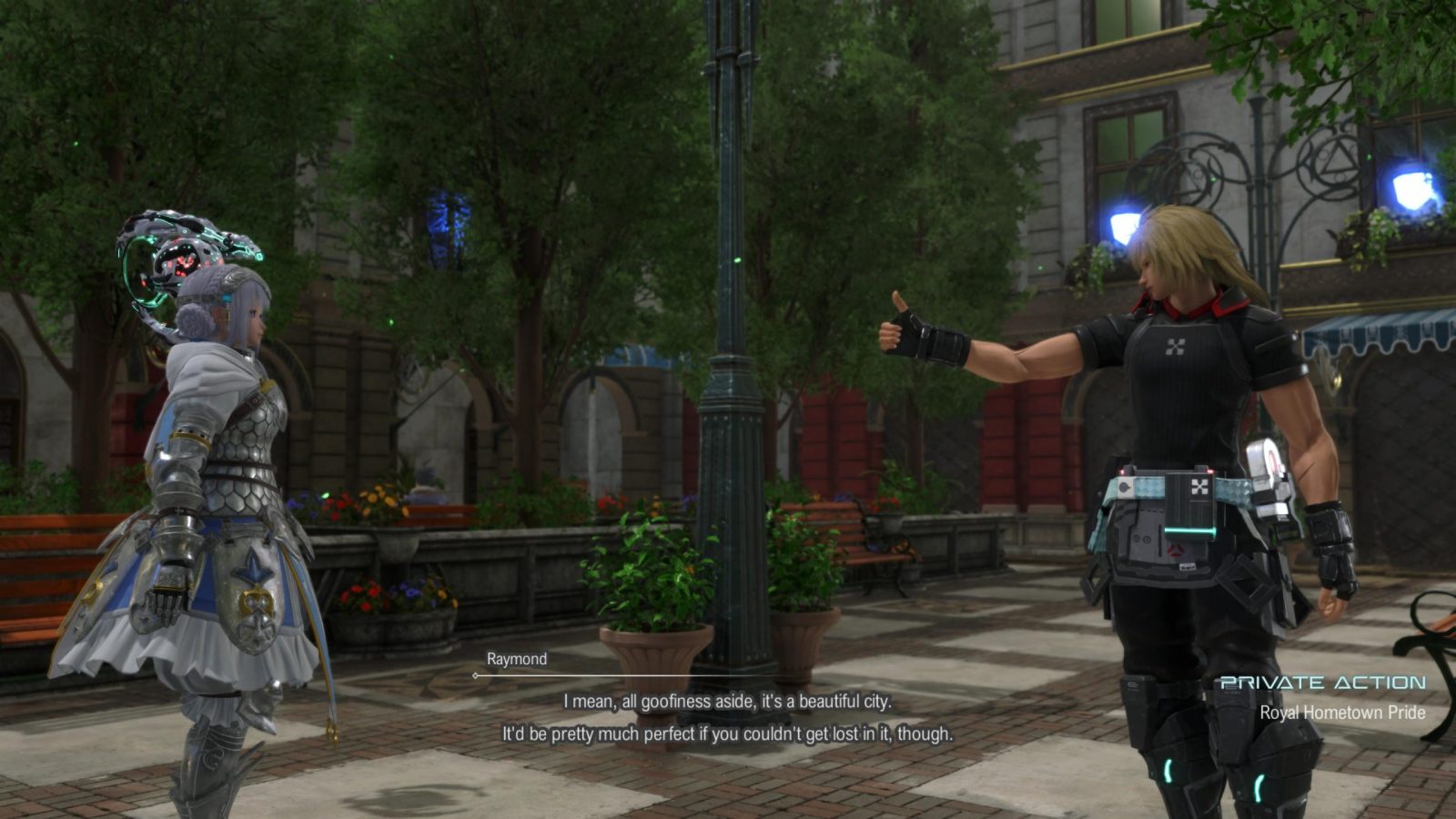
As a final note, I want to touch more on the Dual Protagonist system. I really like having this option in games, but after playing Laeticia’s story, it feels like more focus was put on Ray during development. Some scenes are from his perspective regardless of who you picked and a few cutscenes will even fade back to gameplay on Ray only to jarringly cut to Laeticia. She does witness certain events that Ray doesn’t and has her own set of Private Actions (character building scenes with members of the party), but I can’t help but compare it to Tales of Xillia, a game that did this gimmick much better

















